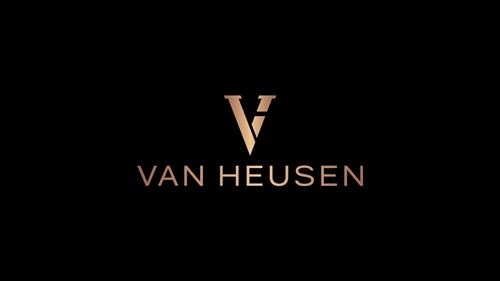Chhattisgarh, known as the “Rice Bowl of India,” is a state rich in tribal culture, folklore, and artistic traditions. The region is home to numerous tribal communities, including Gonds, Murias, Baigas, and Halbas, each with its own distinct dance forms. These traditional dances are performed during festivals, harvest celebrations, religious rituals, and social gatherings, reflecting the tribal way of life, devotion, and community bonding.
Accompanied by traditional instruments like dhol, mandar, timki, and flute, these dances showcase vibrant energy, rhythmic footwork, and deep cultural significance. Let’s explore some of the most famous traditional dances of Chhattisgarh, their origins, and their importance in the state’s cultural landscape.
1. Panthi Dance – The Spiritual Devotion Dance
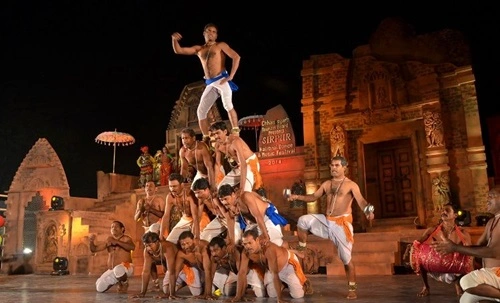
Panthi dance is one of the most popular folk dances of Chhattisgarh, performed by the Satnami community in honor of Guru Ghasidas, the founder of Satnam Panth (a spiritual sect).
- Features: Fast-paced steps, hand gestures, and synchronized movements.
- Themes: Devotion to Guru Ghasidas, spirituality, and social equality.
- Occasions: Maghi Purnima (birth anniversary of Guru Ghasidas), religious gatherings, and festivals.
The dance is accompanied by philosophical and devotional songs, making it a deeply spiritual experience.
2. Raut Nacha – The Dance of Yadav Community
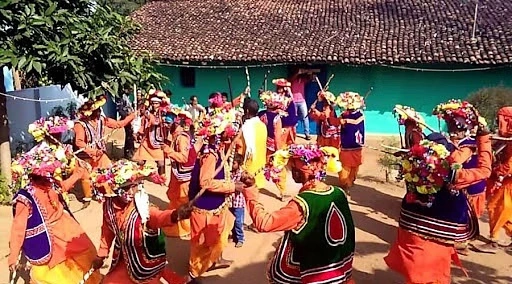
Raut Nacha is a folk dance performed by the Yadav (cowherd) community, symbolizing their devotion to Lord Krishna. It is often referred to as the “Raut Nacha of the Gopas.”
- Features: Swordplay, warrior-like formations, and rhythmic drumming.
- Themes: Worship of Krishna, bravery, and celebrating the victory of good over evil.
- Occasions: Diwali, Govardhan Puja, and rural fairs.
Men dress in traditional dhotis, turbans, and hold sticks or swords, creating a dynamic and heroic performance.
3. Karma Dance – The Tribal Worship Dance
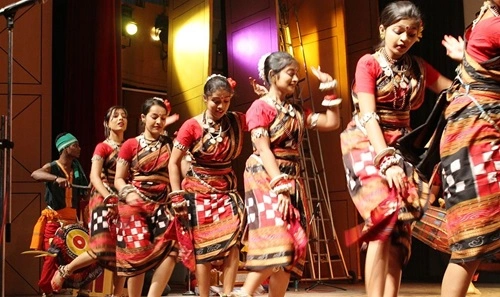
Karma dance is performed by various tribal groups, including the Gonds, Oraons, and Baigas, as part of the Karma festival, which celebrates the Karam tree, symbolizing nature and prosperity.
- Features: Circular formations, clapping, and expressive storytelling.
- Themes: Worship of the Karam tree, gratitude to nature, and tribal unity.
- Occasions: Karma Festival (September-October), harvest season, and religious celebrations.
This dance is often performed in groups, with men and women dancing around the Karam tree, creating a joyful and spiritual atmosphere.
4. Sua Nacha – The Parrot Dance of Women
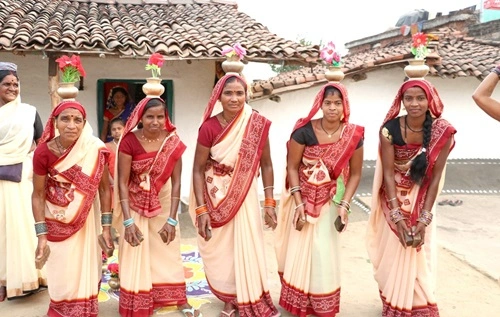
Sua Nacha, or the “Parrot Dance,” is a women’s folk dance, where performers imitate the movements of a parrot (Sua) while singing traditional songs.
- Features: Circular formations, gentle movements, and clapping.
- Themes: Love, social bonding, and nature worship.
- Occasions: Diwali, marriage ceremonies, and festivals.
Women wear colorful sarees and perform with small clay parrots in their hands, making it a symbolic and visually appealing dance form.
5. Gendi Dance – The Bamboo Stilts Dance
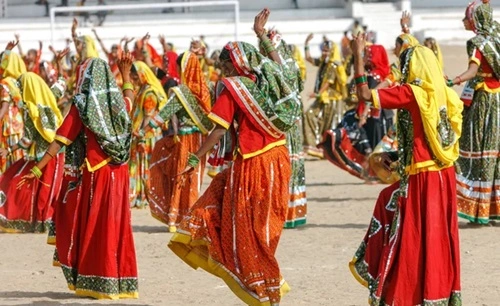
Gendi dance is a unique and highly skilled dance, performed by tribal men standing on bamboo stilts (Gendi). It is both a sport and a cultural tradition.
- Features: Acrobatics, balancing acts, and high-energy movements.
- Themes: Tribal joy, nature, and physical strength.
- Occasions: Fairs, harvest festivals, and local celebrations.
Dancers balance on stilts while moving in sync, making Gendi dance one of the most thrilling performances of Chhattisgarh.
6. Bastar Dussehra Dance – The Grand Tribal Celebration
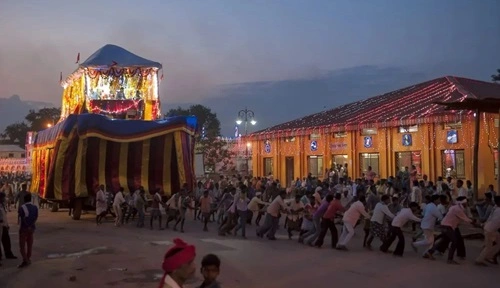
Bastar Dussehra, one of India’s longest and most unique Dussehra festivals, is celebrated with various tribal dances, rituals, and processions.
- Features: Processional dance, drumming, and vibrant costumes.
- Themes: Worship of deities, tribal traditions, and unity.
- Occasions: Bastar Dussehra (celebrated for 75 days in Bastar region).
This dance is a major cultural attraction, showcasing the diverse and ancient customs of the tribal communities of Bastar.
7. Mauli Dance – The Warrior Dance of Chhattisgarh
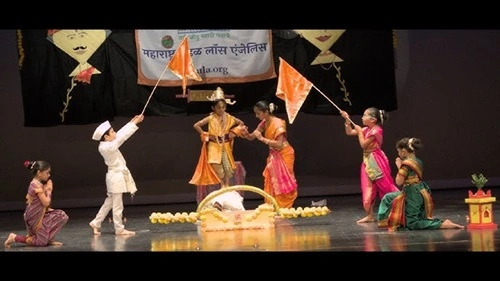
Mauli dance is a high-energy dance, performed by warrior communities, representing bravery and martial traditions.
- Features: Sword and shield formations, energetic steps, and synchronized footwork.
- Themes: Heroism, historical battles, and Rajput warrior traditions.
- Occasions: Religious festivals and special ceremonies.
This dance is an expression of valor, performed with drums and war cries, creating a powerful atmosphere.
8. Mandari Dance – The Rural Dance of Joy
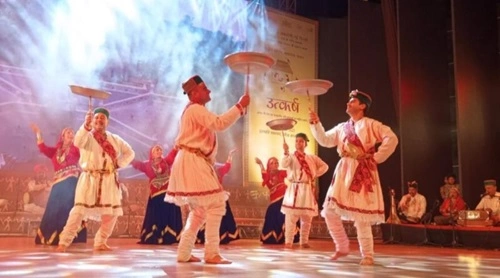
Mandari dance is performed by rural communities, reflecting the daily life and happiness of the people.
- Features: Simple steps, vibrant music, and folk instruments.
- Themes: Celebration of life, community bonding, and festivity.
- Occasions: Harvest festivals, village fairs, and social events.
This dance is a symbol of unity and togetherness, bringing people together through music and movement.
9. Dhankul Dance – The Ritual Dance of Worship
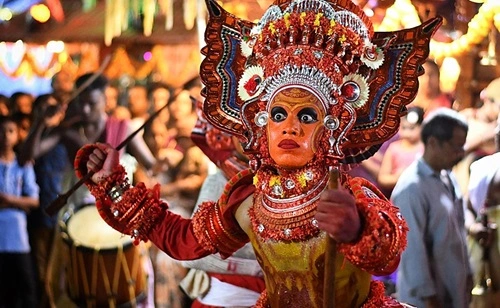
Dhankul dance is performed by tribal priests and devotees as a ritual offering to deities and spirits.
- Features: Slow, spiritual movements, and dramatic expressions.
- Themes: Worship, sacrifice, and divine connection.
- Occasions: Temple rituals, religious ceremonies, and community gatherings.
This dance involves chanting and playing traditional instruments, creating a deeply spiritual experience.
10. Parghani Dance – The Dance of Victory
Parghani dance is performed to celebrate tribal victories and historical triumphs.
- Features: March-like formations, vigorous movements, and drum beats.
- Themes: War stories, bravery, and tribal pride.
- Occasions: Victory celebrations, fairs, and Dussehra.
This dance serves as a reminder of Chhattisgarh’s tribal resilience and warrior heritage.
Conclusion
The traditional dances of Chhattisgarh reflect the state’s deep connection with nature, devotion, and tribal customs. Each dance, from the spiritual Panthi to the energetic Gendi dance, holds a unique place in the cultural identity of Chhattisgarh.
These dance forms are not just entertainment but also a way of preserving folklore, history, and social traditions. As Chhattisgarh continues to evolve and modernize, efforts are being made to promote and protect these folk dances, ensuring that the rich cultural heritage of the state remains alive for future generations.
With their vibrant energy, rhythmic beats, and deep-rooted traditions, Chhattisgarh’s folk dances continue to captivate and inspire, celebrating the state’s artistic brilliance and tribal spirit.
